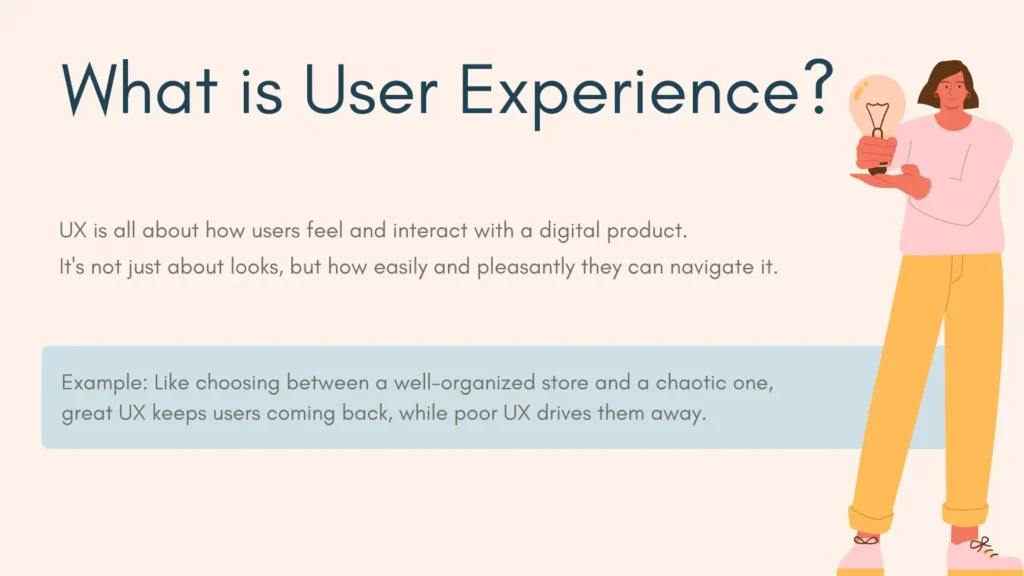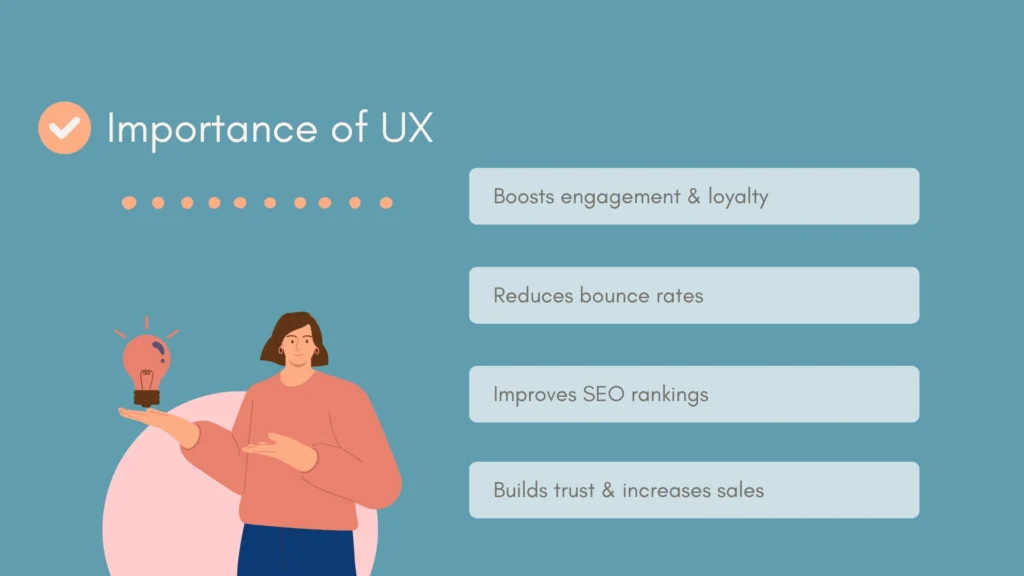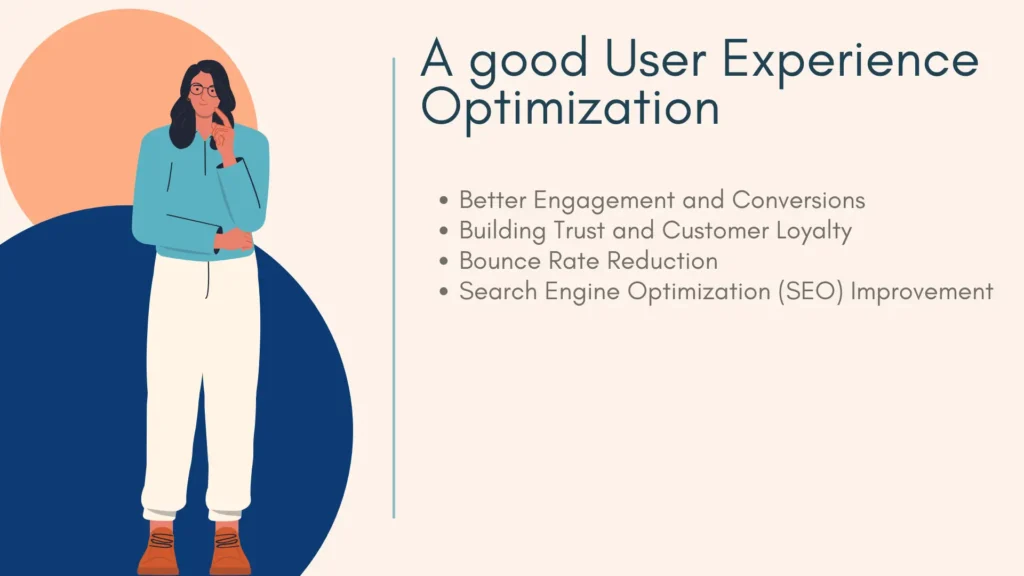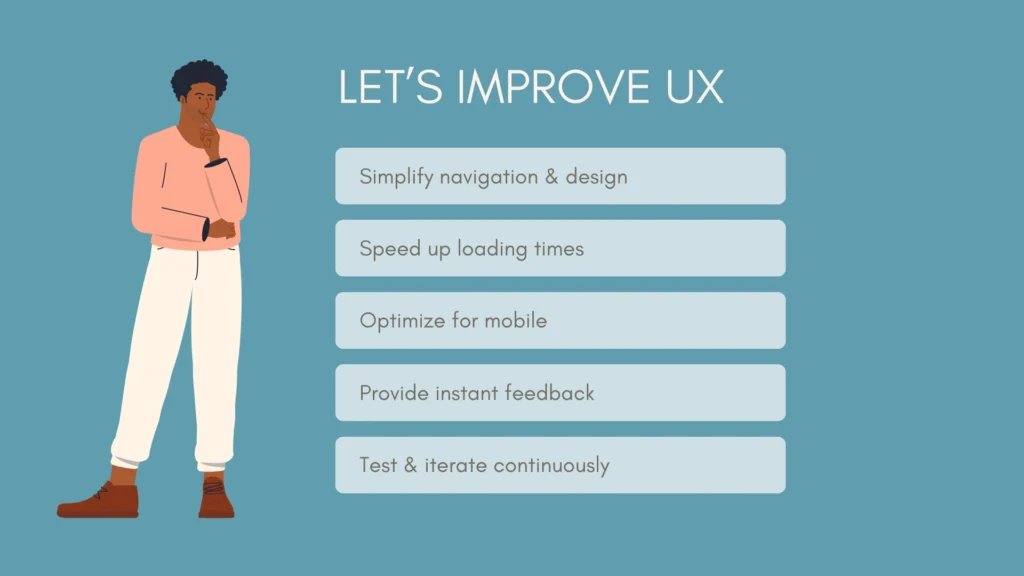
Everything in this digital world is running very fast. In this view, the company needs to adjust to the situation by User Experience Optimization. For a simple explanation, UX is generally all the user’s feelings and experiences while using a certain product, website, or application. This can be interpreted from the usability to the speed at which it responds and satisfaction at the end after using the product.
With so many options available at present, users expect a great deal from any application or website. If one fails to provide a seamless, pleasant experience to the users, they will never hesitate to quit. That is where User Experience Optimization steps in. The very essence of User Experience Optimization is to enhance comfort and satisfaction to such a degree that it becomes simple, enjoyable, and valuable for the users.
For example, I faced a situation when I was working with online shopping applications. Most of them did not give me a good experience. Why? Because the shopping process was too complicated and slow. Then, I came across an application that showed all the options clearly and fast. This experience taught me how important it is to optimize UX in the right way to affect User Experience Optimization positively.
User experience, or in its abbreviated form UX, stands out as perhaps the most crucial success factor that any website or product could hope for. If users are comfortable and satisfied using an app or website, they will surely come for more or recommend it to others. If the UX is bad, users will leave in no time and switch over to alternatives.
What is User Experience?

UX is more about the design of the user experience- what they feel, perceive, and the level of satisfaction they get from the interaction with a website, application, or any other such digital product. The UX covers the aesthetic but also goes beyond the aesthetic in terms of how users find and work with a product.
A great UX will have users surfing smoothly through a website or application with ease and, as such, derive pleasure and satisfaction from it. While a poor UX will drive users into frustration and finally away from your site, an ideal situation would have customers flowing across it with relative ease and ultimately liking the website.
1. In one store, the aisles are neat and easy to navigate; at any time, staff members are on hand for anyone requiring help; products are easy to find. The shopping experience will therefore be quite pleasant and carefully unvexing.
2. This store is chaos: Everything is everywhere, there’s barely any customer service, and the check-out lines snake throughout the store.
Having been to both stores, you are likely to like the first one because it was very straightforward, while the second chaotic store would probably make you decide never to go back. It is just an analogy, but it says much about UX in physical and digital spaces: how it may influence user retention.
Why Is UX Important?

Great UX is not just important for the sake of looking good; it’s actually what drives the bottom line of your business. Here are some of the reasons why investment in good UX is paramount:
- Customer Satisfaction: A seamless and pleasant experience will make them want to come back for more. Happy clients are willing to be returning customers by choice.
- Higher Sales and Conversions: Complicated navigation during a purchase means abandoned shopping carts, where sales can be lost. On the other hand, easy and smooth customer experiences can seriously increase conversions.
- Brand Loyalty: Happy users have trust in the brand and mostly refer it to others for organic growth and visibility of the brand.
- Lower Support Costs: A clear and intuitive website reduces the likelihood of a user getting confused, hence fewer calls to the customer support center.
Personal Experience: Some months ago, I tried purchasing a plane ticket online. One of the websites that I visited had an extremely complicated interface. After several minutes of struggling with the first website, I became frustrated and decided to give up. The second website I visited was refreshingly simple and user-friendly, allowing me to complete my purchase in under five minutes. This experience highlights the essential role of effective user experience (UX) design..
Attributes of a good User Experience Optimization

- Better Engagement and Conversions
Good UX means it will make them want to use your product even more. Clearly, when users can find the information they are looking for or complete tasks without hitches, the chances of creating loyal customers improve.
- Building Trust and Customer Loyalty
Now, imagine a comparison of two online stores. One is with a beautiful design, easy access to products, and an easy checkout. Another one is slow and confusing. Which would you choose? Most people just like the first option because it feels better to use. A good UX instills trust and keeps customers coming back.
- Bounce Rate Reduction
Have you ever visited a website which took too long to load or had broken buttons? Most users leave such sites immediately. The same applies to apps: every second of waiting or confusion increases the chance a user will leave. Improving user experience (UX) keeps visitors on your site longer. Improving search engine optimization (SEO) is also essential for User Experience Optimization.
- Search Engine Optimization (SEO) Improvement
In its ranking of sites, Google is considering UX in its results rankings. Faster-browsing, more organized, easy-to-navigate sites rank at the top level. Thus, UX isn’t just for the users but even helps increase visibility online.
My Personal Experience of UX
A while ago, I tried purchasing a digital tool from a foreign website. It had a very complicated sign-up process with many unnecessary forms. When I clicked “Pay,” nothing really happened. Because I was not sure if my payment went through, I decided to cancel the purchase.
Later on, I purchased from another website. It had a smooth checkout, pre-filled the necessary details, and at the end, it showed a clear confirmation message of payment. That slight difference made me believe more in the second site, and I turned into a returning customer.
User experience should be improved through a well-structured process that is ongoing. There are four main steps in UX design: defining user problems, defining the problems, creating solutions, and testing and iterating on the solutions. Every step makes it easier for users to interact and improves their experiences.
Identifying UX Issues
The first stage of User Experience Optimization is identifying various problems and issues within an application or website. The first part of analyzing how users behave is to look at statistics like heat maps, conversion rates, and bounce rates. Through these statistics, we can identify where on the site there are problems for users. Testing how easy the site is to navigate and directly interviewing users can also give us valuable information on the project. These methods give us very detailed insight into user needs and pain points, thus enabling us to detect the problems that may affect the user experience.
Prioritizing UX Changes
After identifying the problem, you have to prioritize the changes. Now, you have to consider what changes in your product might most affect users but will be the least consuming in terms of time and resources for you. You have to consider studying the data gathered earlier to check the impact a certain change could bring regarding customer satisfaction. Typically, it is necessary to accelerate changes which can make a difference fast, such as improvement in placing buttons or making the process of purchase quite easy.
Design, Develop, and Test
When the changes are prioritized, the design team develops prototypes. It is necessary to test these prototypes in experimental processes such as A/B testing and multivariate testing in order to determine which of these options are best. The purpose of A/B tests is to measure the effect of changes in a controlled environment. The objective in this phase is to assist businesses to decide on the ideal solution to optimize user experience with minimum risk.
Measuring Results and Feedback
One must take into account the results of changes after they have been implemented. The conversion rate, the frequency with which users come back, and page time spent are indicators of the impact the changes have had on the user experience. Secondly, continuous feedback from users and behavioral analysis after changes help the teams ensure that the optimizations have been properly conducted in order to continue the improvement processes.
Maximizing user experience is an aspect that needs to be continually adjusted and maximized based on data and user responses. This type of solution has the potential to make customers happy and make the company function more effectively.
Examples for Better Understanding:
Identification of UX Issues – User Behavior Analysis
Let’s say you run an e-commerce website and notice that the bounce rate of your product pages is too high. Using tools like heat maps, which show where users click more and where they ignore, it helps to point out the exact problem. If you feel that most users are leaving the page without any interaction, you should vividly expose the product information in a more attractive way, or place the “Buy” button in more catchable positions.
Prioritizing UX Changes (Evaluating Change Impact)
After you identify the problem, you need to prioritize which changes to make. For instance, if your online checkout process is complicated and too many customers abandon their purchase at the final step, you decide to simplify it. You don’t add new features, but you summarize the forms and reduce the number of steps. This can significantly increase your conversion rate and is more valuable than other complex changes.
A/B Testing: Design and Test Changes
Having prioritized changes, you need to test those changes. You want to change the design of the “Buy” button by using different colors or text; hence, you run an A/B test where half of the users are exposed to a new version, and the other half to an old version. By evaluating our findings, we discover that the blue colour and “Continue Shopping” text provide a greater conversion rate. This is something that can now be used for all users.
Measuring Results and Feedback – Evaluating Effects
After they’ve been implemented, it will be crucial to measure the outcomes. As you execute all this, you’ll be monitoring the cart abandonment rate and the conversion rate closely. You find that the conversion rate has drastically risen, and users are repeatedly completing their purchase. With this information, you are able to recognize that your changes were in the right direction, you can improve further with this feedback.
Website for Medical Services
Suppose you run a medical services website; you feel that patients are not able to book an appointment through the site. To identify problems:
You use heat maps and find that users face issues on the booking page, for example, they can’t see the available time slots. Also, redesigning the booking process by taking data and adding a dynamic calendar to the page that will make it simple for users to see and then book times available. You also run an A/B test of the old and new booking pages, finding the new version significantly cuts down users’ acceptance, while online bookings went up.
These examples are the proof of how User Experience Optimization processes can uncover actual business issues and, through tiny yet impactful changes, make improvements to user experiences.
How to Improve UX?

1. Reduce to the minimum:
Let the design be clear and straightforward. Employ understandable language, intuitively understandable buttons, and forms of navigation which will feel just natural. When users need to think hard for what they need, they just won’t linger on your website.
Example: Instead of jargon-filled phrases like “Proceed to Transaction Process”, use simple ones like “Pay” or “Place Order.”
2. Speed counts:
Nobody likes a slow website. Keep images to a minimum, remove anything that is not necessary, and focus on how fast it loads.
Research Insight: Actually, studies have revealed that about 54% of users will leave a site if it takes them longer than three seconds to load. Thus, focusing on speed can dramatically enhance user retention.
3. Don’t Forget Mobile:
Since most users browse the web via mobile devices, one should ensure that their experience is seamless even on the small screen.
Example: Google gives higher rankings to mobile-friendly websites in its search results; therefore, any negligence in mobile optimization might adversely affect your visibility and traffic.
4. Provide Visual Feedback:
The bottom line is providing feedback to users upon interaction with anything on your site: changes in button colors, spinning of loading animations, and confirmation messages.
Example: When the user clicks the “Buy” button and doesn’t feel anything, he is most likely to get the impression that something went wrong. A message such as “✔ Your order has been placed!” conveys the essential difference in user experience.
5. Testing with Real Users:
Your website might look great to you, but real users will encounter issues that you never even anticipated. Take feedback from as many users as possible and observe them using your website.
Example: A design company, after having optimized their homepage from the feedback of constructive criticism, witnessed a staggering 30% increase in sales. A design agency, after improving its homepage upon critical feedback, recorded a staggering 30% increase in sales.

Conclusion
User Experience Optimization (UX optimization) is essential to any website, app, or digital product. Seamless, quick, and simple UX not only maintains user engagement but also builds trust and enhances conversion rates. Bad UX, conversely, drives users away.
To enhance user experience, businesses ought to prioritize easy navigation, fast loading, mobile responsiveness, good feedback, and regular testing. Minor yet significant tweaks a streamlined checkout process or more readable buttons, for instance can yield substantial returns. Ultimately, UX is not just about design; it’s about making users’ interactions easy, enjoyable, and efficient. An improved user experience culminates in satisfied customers, increased retention, and more business success.
